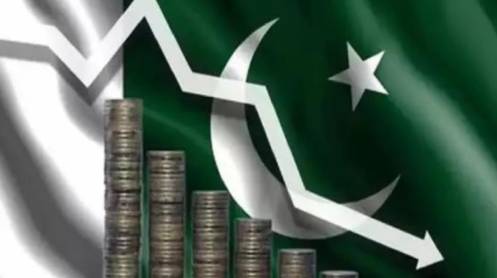ISLAMABAD: The circular debt in Pakistan’s power sector has surged to Rs2.636 trillion by the end of January 2024, surpassing the government’s commitment to keep it within Rs2.31 trillion for the fiscal year.
According to data from the Power Division of the Ministry of Energy, the circular debt rose by Rs84 billion in January alone, reaching Rs2.636 trillion compared to Rs2.551 trillion in December 2023. Despite multiple tariff hikes through annual base tariffs, quarterly adjustments, and fuel cost adjustments, the debt continues to climb, with a net increase of Rs325 billion in the first seven months of the fiscal year.
The Circular Debt Report for January 2024 highlights a persistent upward trend in the circular debt, continuing from the previous fiscal year despite significant tariff adjustments. The report indicates that the debt increased by Rs463 billion in the first seven months of FY2024, averaging Rs66 billion monthly, compared to Rs408 billion in the same period last year. However, accounting for stock payments of Rs137 billion from June 2023 to January 2024, the net increase stood at Rs325 billion.
Payables to power producers, which were Rs1.434 trillion at the start of FY2023, rose to Rs1.77 trillion by January 2023 and slightly decreased to Rs1.760 trillion by January 2024. The stock of permanent debt guaranteed by the government remained unchanged at Rs765 billion during this period.
The increase in circular debt is attributed to poor recoveries by distribution companies, high system losses, pending generation costs, non-payments by K-Electric, and interest charges. The government’s efforts to recover about Rs116 billion from consumers last year have not stemmed the rising debt.
Distribution companies contributed the most significant increase, with a Rs284 billion rise in circular debt in the first seven months of the current year, up 19%. This includes Rs198 billion in under-recoveries, 16.5% higher than the Rs170 billion in the same period last year. The inefficiency losses of distribution companies were claimed at Rs86 billion, a 25% increase from last year’s Rs69 billion.
This report comes amid ongoing talks with the International Monetary Fund (IMF) for the next bailout. While the government claims improvements, the IMF noted that the power sector’s circular debt, at Rs2.6 trillion (2.5% of GDP), has remained broadly flat since October 2023. The IMF attributed earlier slippage to lower-than-expected recoveries following a large annual tariff rebasing in July 2023.
The government has acknowledged to the IMF that “Pakistan’s ongoing sustainability will be at risk” without addressing the energy sector’s viability. It has committed to regular, timely, and automatic adjustments to natural gas and electricity tariffs to ensure full cost recovery and to reduce price disparities. Additionally, the government has promised to find cost reductions and accelerate structural reforms, including improving the governance of distribution companies, integrating captive power demand into the electricity grid, finalizing a proposal on tube well subsidy reform by the end of FY2024, and expanding renewable energy capacity.
Story by Khaleeq Kiani







